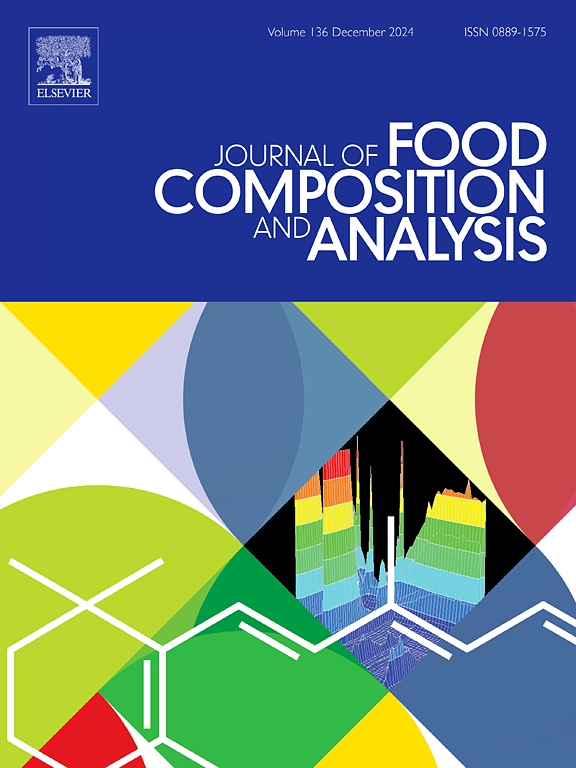Nutrient value and density of South African processed meat
IF 4
2区 农林科学
Q2 CHEMISTRY, APPLIED
引用次数: 0
Abstract
There has been a significant rise in processed meat consumption in South Africa, yet no previous studies have assessed the nutrient density of country-specific processed meats. This study analysed eight processed meat products: tinned corned beef, tinned meatballs, hamburger patties, frozen beef sausages, French and chicken polony, red and chicken viennas, focusing on their nutrient density and nutrient-to-price ratio. The energy content varied from 447 kJ/100 g to 1020 kJ/100 g in tinned meatballs and frozen beef sausages, respectively. Protein content ranged from 8.31 g/100 g in tinned meatballs to 15.9 g/100 g in hamburger patties, lower than in red meat. Fat content was 3.69 g/100 g in tinned meatballs to 17.9 g/100 g in frozen products. Saturated fat constituted 30–50 % of total fat, monounsaturated fat 35–47 %, and polyunsaturated fat 3–25 %. Trans-fat levels were within regulatory limits. Iron content was highest in corned beef at 3.61 mg/100 g, and zinc was highest in hamburger patties at 2.86 mg/100 g. Over 80 % of products met sodium reduction targets. Nutrient profiling indicated tinned meatballs, French polony, and hamburger patties offer the best nutritional value per cost. Processed meats can provide protein, iron, and zinc, but consumer education on the benefits of lean meats and moderate processed meat consumption remains important.
求助全文
约1分钟内获得全文
求助全文
来源期刊

Journal of Food Composition and Analysis
工程技术-食品科技
CiteScore
6.20
自引率
11.60%
发文量
601
审稿时长
53 days
期刊介绍:
The Journal of Food Composition and Analysis publishes manuscripts on scientific aspects of data on the chemical composition of human foods, with particular emphasis on actual data on composition of foods; analytical methods; studies on the manipulation, storage, distribution and use of food composition data; and studies on the statistics, use and distribution of such data and data systems. The Journal''s basis is nutrient composition, with increasing emphasis on bioactive non-nutrient and anti-nutrient components. Papers must provide sufficient description of the food samples, analytical methods, quality control procedures and statistical treatments of the data to permit the end users of the food composition data to evaluate the appropriateness of such data in their projects.
The Journal does not publish papers on: microbiological compounds; sensory quality; aromatics/volatiles in food and wine; essential oils; organoleptic characteristics of food; physical properties; or clinical papers and pharmacology-related papers.
 求助内容:
求助内容: 应助结果提醒方式:
应助结果提醒方式:


